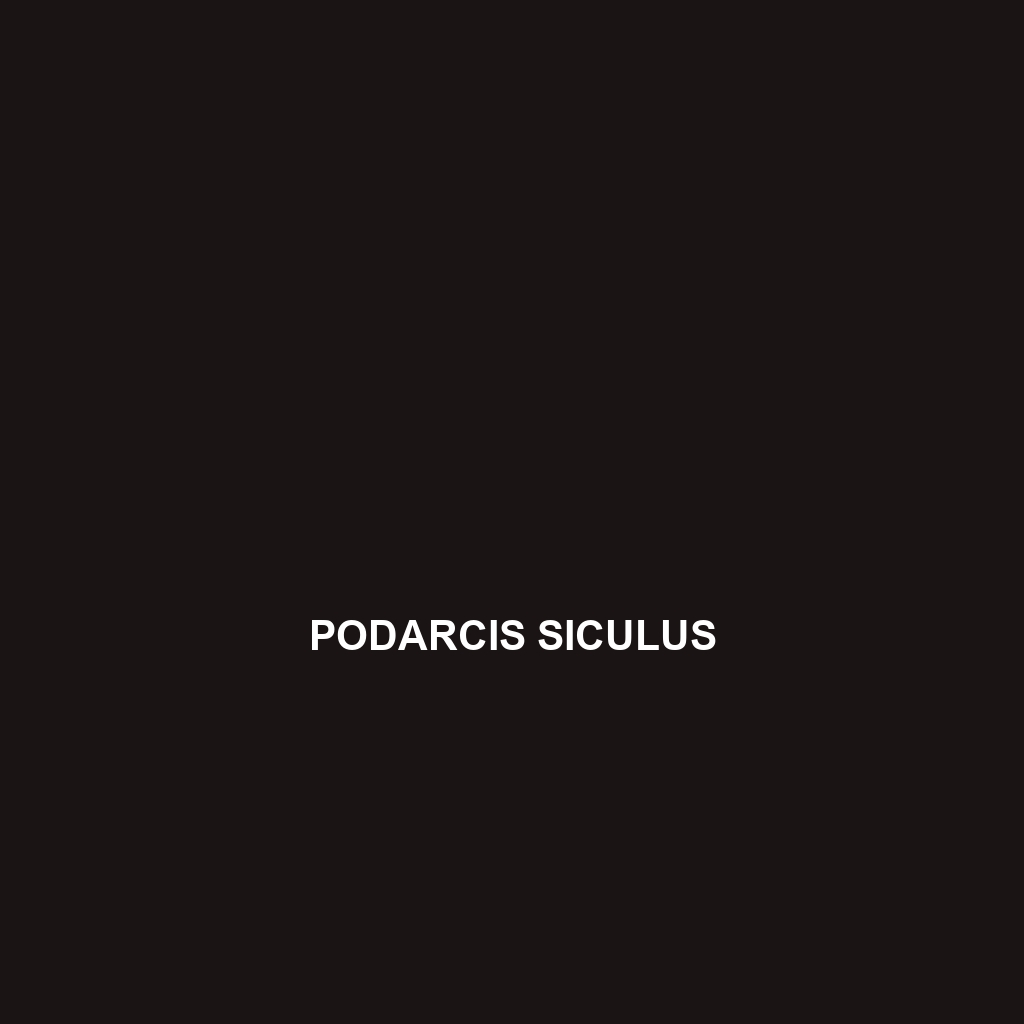Common Name
Podarcis siculus
Scientific Name
Podarcis siculus
Habitat
Podarcis siculus, commonly known as the Italian wall lizard, primarily inhabits a variety of environments across southern Europe. This resilient species can be found in a range of habitats, including temperate forests, shrubby areas, and rocky outcrops. They thrive in regions characterized by Mediterranean climates, which feature hot, dry summers and mild, wet winters. Podarcis siculus is also commonly observed in urban areas, gardens, and agricultural lands, showcasing its adaptability. The lizard prefers sunny locations where it can bask, and it often uses crevices, stones, and vegetation for refuge. This adaptability to diverse habitats makes it an intriguing species to study.
Physical Characteristics
Podarcis siculus is distinguished by its striking coloration and physical features. Adults typically measure between 20 to 25 centimeters (8 to 10 inches) in total length, including the tail, which constitutes a significant portion of their length. The dorsal surface exhibits a variety of colors ranging from olive green to brown, often adorned with dark spots or stripes, providing excellent camouflage amidst their natural surroundings. Their ventral surface is usually light-colored and may vary from yellow to white. Podarcis siculus possesses a slender body and well-developed limbs, featuring five toes on each foot, which aid in climbing and swift movement. Their sharp claws are adapted for gripping surfaces, enhancing their agility in both terrestrial and rocky habitats.
Behavior
The behavior of Podarcis siculus is both fascinating and complex. These lizards are diurnal, primarily active during the daytime. They are known to bask in the sun on warm surfaces, a behavior essential for thermoregulation. Social interactions are evident, as these lizards establish social hierarchies, particularly during the breeding season. Males exhibit territorial behaviors, often engaging in displays that include push-ups and head-bobbing to assert dominance. Mating rituals are equally intriguing, involving elaborate courtship displays where males may change color or perform specific movements to attract females. While not migratory, these lizards move between different basking and foraging sites throughout their day, showcasing their adaptability.
Diet
Podarcis siculus is classified as an insectivore, primarily feeding on a diverse diet of insects such as crickets, beetles, and ants. However, they are opportunistic feeders and will also consume small invertebrates, including slugs and worms, and occasionally plant material, giving them an omnivorous aspect to their diet. Their foraging behavior involves stalking and ambushing prey, and they use their keen eyesight to detect movement. This adaptability in diet allows Podarcis siculus to thrive in various environments with differing food availability.
Reproduction
The reproductive cycle of Podarcis siculus typically occurs from spring to early summer, aligning with optimal climatic conditions for hatchling survival. Males begin to display courtship behaviors involving territorial displays and brightened colors to attract females. After mating, females typically lay clutches of 4 to 10 eggs in sandy or loose soil, often in hidden locations to protect them from predators. The incubation period lasts approximately 6 to 8 weeks, after which the hatchlings emerge. Parental care is minimal, and the young are independent from birth, with rapid growth rates that allow them to mature quickly, often reaching reproductive age in their first year.
Conservation Status
As of now, Podarcis siculus is listed by the International Union for Conservation of Nature (IUCN) as a species of Least Concern. This classification reflects its widespread distribution and stable populations throughout its range. However, habitat destruction, urbanization, and the introduction of invasive species pose potential threats to their habitats. Conservation efforts focus on habitat preservation and fostering environments conducive to maintaining healthy populations of this adaptable lizard.
Interesting Facts
Podarcis siculus exhibits fascinating behaviors that intrigue researchers and enthusiasts alike. One remarkable adaptation is its ability to change color in response to environmental factors and social interactions. This dynamic coloration is not only a beautiful display but also plays a role in thermoregulation and social signaling among lizards. Additionally, these lizards are known for their speed and agility, capable of evading predators efficiently, and can often be seen darting into crevices or foliage at the first sign of danger. Their dynamic behaviors and adaptability contribute to their allure as a subject of study.
Role in Ecosystem
Podarcis siculus plays a vital role in its ecosystem as both predator and prey. As an insectivore, it helps control insect populations, contributing to the balance of the food web. Additionally, it serves as a food source for various predators, including birds, snakes, and larger mammals. By participating in these interactions, Podarcis siculus aids in maintaining ecosystem health. Moreover, their presence can indicate the overall health of their habitats, making them valuable bioindicators for ecological studies. Understanding their role within ecosystems highlights the importance of conserving diverse habitats for the balance of species.
